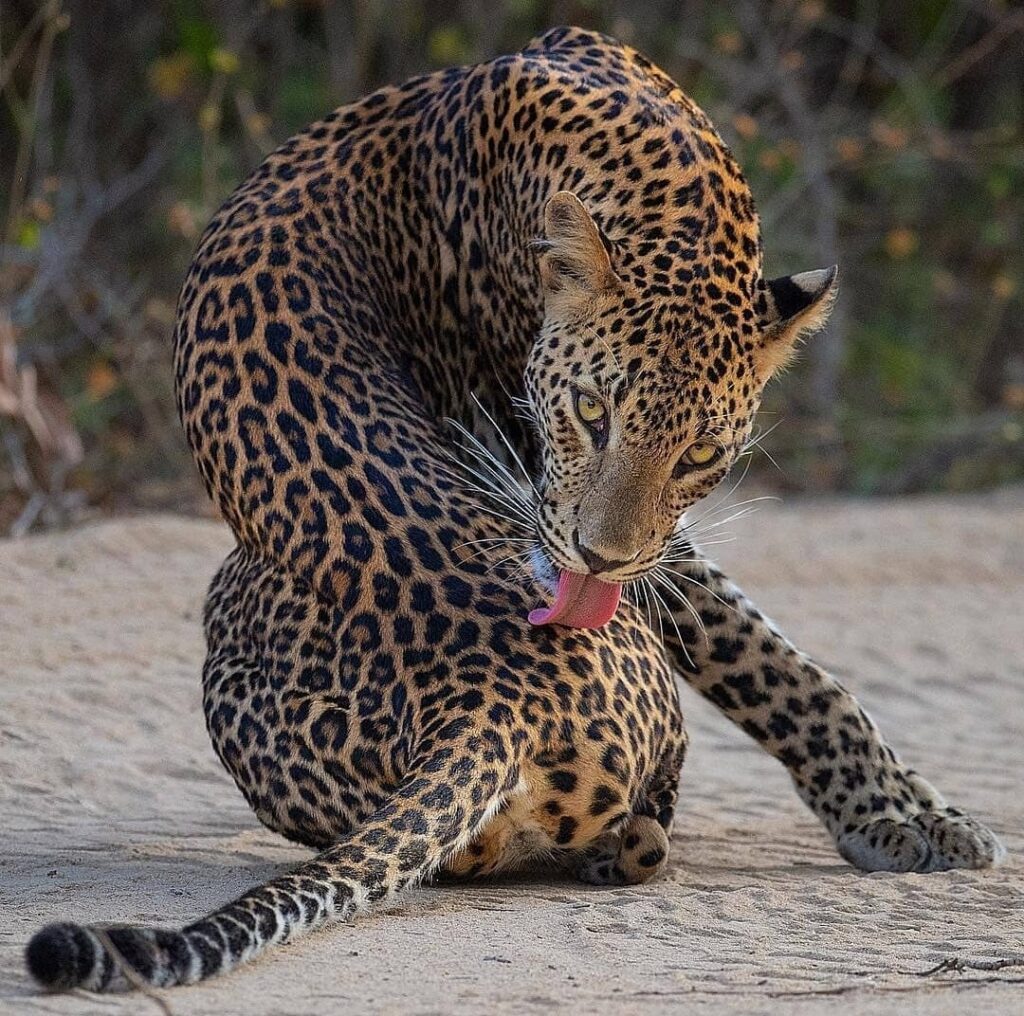Yala National Park in Sri Lanka is synonymous with leopards. Boasting one of the highest leopard densities in the world, it is a prime destination for wildlife enthusiasts eager to see these elusive big cats in their natural habitat. While spotting a leopard requires patience, preparation, and a bit of luck, the experience is undoubtedly worth the effort. Here’s a guide to help you maximize your chances of encountering a leopard in Yala National Park.

Understanding the Sri Lankan Leopard
The Sri Lankan leopard (Panthera pardus kotiya) is a subspecies endemic to the island. These magnificent creatures are apex predators, playing a vital role in maintaining the park’s ecological balance. Key facts to know:
- Habitat: Leopards in Yala are known to inhabit dense forests, open grasslands, and rocky outcrops.
- Behavior: Solitary and territorial, leopards are most active during dawn and dusk.
- Diet: Their diet includes deer, wild boar, and smaller mammals, which are abundant in Yala.
Understanding their habits and habitats is essential for planning a successful safari.
Best Time to Spot Leopards
Timing is crucial when it comes to leopard sightings. Consider these tips:
- Morning Safaris: Leopards are more active during the cooler hours of the day. Early morning safaris offer the best chance of spotting them.
- Evening Safaris: As the sun sets, leopards often emerge to hunt or patrol their territory.
- Dry Season: Between February and October, water sources become scarce, and leopards are more likely to gather near waterholes.
Plan your visit during these optimal times to increase your chances of success.
Choosing the Right Zone
Yala National Park is divided into multiple zones, but Zone 1 is particularly famous for leopard sightings. Here’s why:
- High Leopard Density: Zone 1 has a healthy leopard population and numerous rocky outcrops where they bask in the sun.
- Accessibility: It’s the most visited zone, with well-established safari routes.
Discuss your preferences with your safari guide to ensure you’re exploring areas with the highest likelihood of sightings.
Hire an Experienced Guide
An experienced guide can make all the difference in your safari experience. Benefits of having a knowledgeable guide include:
- Tracking Skills: Guides are adept at identifying leopard tracks, scat, and other signs of their presence.
- Spotting Expertise: They know where leopards are most likely to be seen based on recent sightings.
- Behavior Insights: Guides can interpret animal behaviors, such as alarm calls from deer or monkeys, which often indicate a predator nearby.
Investing in a skilled guide enhances your chances of encountering a leopard.
Stay Alert and Patient
Spotting leopards in the wild requires vigilance and perseverance. Keep these tips in mind:
- Eyes on the Trees: Leopards often rest on tree branches to avoid the heat and stay hidden.
- Watch for Movement: Look for subtle movements in the grass or shadows near rocky areas.
- Listen Carefully: Pay attention to alarm calls from other animals, as these often signal a predator’s presence.
Patience is key; sometimes, the best sightings occur when you least expect them.
Photography Tips for Leopard Spotting
Capturing the perfect shot of a leopard can be challenging but rewarding. Here are some tips:
- Use a Telephoto Lens: A 200-400mm lens is ideal for capturing close-up shots from a safe distance.
- Shoot in Burst Mode: This increases your chances of getting a sharp image during sudden movements.
- Focus on the Eyes: The leopard’s piercing gaze makes for a striking photograph.
- Adjust for Low Light: Morning and evening safaris often require higher ISO settings and wider apertures to compensate for low light.
Remember to stay ethical and avoid disturbing the animals for the sake of a photograph.
Respect Wildlife and Park Rules
Leopards are wild animals, and observing them responsibly is essential. Follow these guidelines:
- Keep a Safe Distance: Do not approach or provoke leopards.
- Avoid Loud Noises: Keep noise levels low to avoid scaring off wildlife.
- Stay Inside the Vehicle: Exiting the safari vehicle is strictly prohibited and dangerous.
- Do Not Litter: Ensure that no trash is left behind to maintain the park’s pristine environment.
Respecting the park’s rules helps protect the leopards and ensures a safe experience for all visitors.
Why Leopard Spotting in Yala is Unique
What sets Yala apart from other wildlife destinations?
- High Visibility: Unlike leopards in dense jungles elsewhere, those in Yala are often seen in open terrains and rocky outcrops.
- Thrilling Encounters: The park’s diverse ecosystems create dynamic opportunities to observe leopards in various settings.
- Conservation Success: Visiting Yala supports ongoing conservation efforts to protect leopards and their habitats.
These factors make Yala a must-visit destination for anyone passionate about wildlife.
Conclusion

Spotting a leopard in Yala National Park is a once-in-a-lifetime experience that combines the thrill of the wild with the beauty of nature. By planning your safari strategically, hiring an expert guide, and respecting the park’s rules, you can significantly enhance your chances of encountering these magnificent creatures. Whether you’re a seasoned wildlife enthusiast or a first-time visitor, Yala offers an unforgettable adventure that will stay with you forever. Start planning your trip today and prepare for the ultimate wildlife experience!

